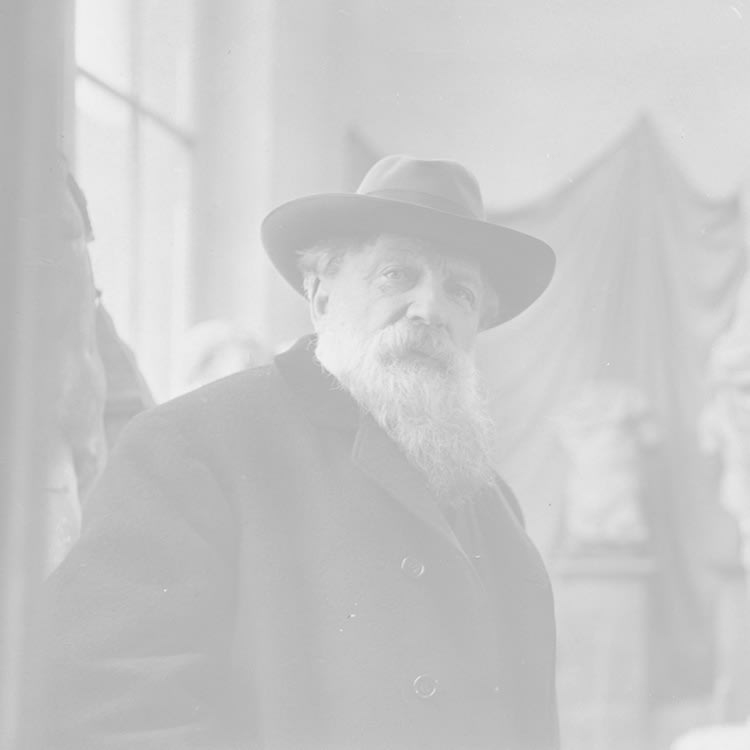AUGUSTE RODIN 1840-1917
Auguste Rodin is a Symbolist sculptor and a forerunner of Modernism, whose works are exhibited at the HELENE BAILLY gallery.
Auguste Rodin was born in Paris in 1840 and died in Meudon in 1917. From the age of 14, he studied at the Ecole Spéciale de Dessin et de Mathématiques, now better known as the Ecole Supérieure des Arts Décoratifs where he learned to develop his aesthetic sensitivity with Horace Lecoq de Boisbaudran.
He met Alphonse Legros and discovered sculpture in 1855, attending Antoine-Louis Barye and Albert-Ernest Carrier-Belleuse's courses.
At the end of his studies, he worked in various sculpture workshops as a practitioner, in the heart of urban changes undertaken by Baron Haussmann. After a stay with the priests of the Blessed Sacrament, following the premature death of his sister Maria, the Father Pierre-Julien Eymard urged him to persevere in sculpture.
From 1865 to 1870, he worked closely with Carrier-Belleuse, a renowned sculptor at the time. His work was finally rewarded at the Salon de Paris in 1875 where he exhibited. From this collaboration, many ornamentations were born, notably for the Opera Garnier and the Théâtre des Gobelins. In 1870, he worked with Antoine Joseph Van Rasbourgh for the Bourse de Commerce de Bruxelles.
In 1877, he exhibited L'Age d'Airain (The Bronze Age) at the Cercle Artistique et Littéraire in Brussels and at the Salon des Artistes Français in Paris. In 1879, he joined the Manufacture Nationale de Sèvres and opened his workshop at Dépôt des Marbres in 1880.
The French State commissioned a sculptural transcription of the Fleurs du Mal by Baudelaire, his most important work in terms of size that was not smelted during his lifetime. In 1882, he created Le Penseur. In 1884, his tumultuous and passionate affair with the talented Camille Claudel inspired him L'Eternel Printemps.
Rodin's work created a break in the academic sculpture of this time, partly because he focused on creating emotion in each part of his subjects. The hand as well as face reflect the sculptor's sensitivity and Rodin developed new techniques : assemblages, demultiplication and fragmentation.
The way he sculpted movement liberated itself from constraints and gave to his works a complete feel of freedom. He subtly played on imbalances to release his subjects from the original block while constantly returning to the raw material.
In 1889, he founded the Société Nationale des Beaux-Arts and produced the bust of Victor Hugo for the Panthéon. He exhibited with Claude Monet at Georges Petit gallery. In 1894, he stayed with him in Giverny, where he met Paul Cézanne.
In 1916, he made three donations to the French State, preparing his succession. The Senate quickly voted the creation of the Rodin Museum.


